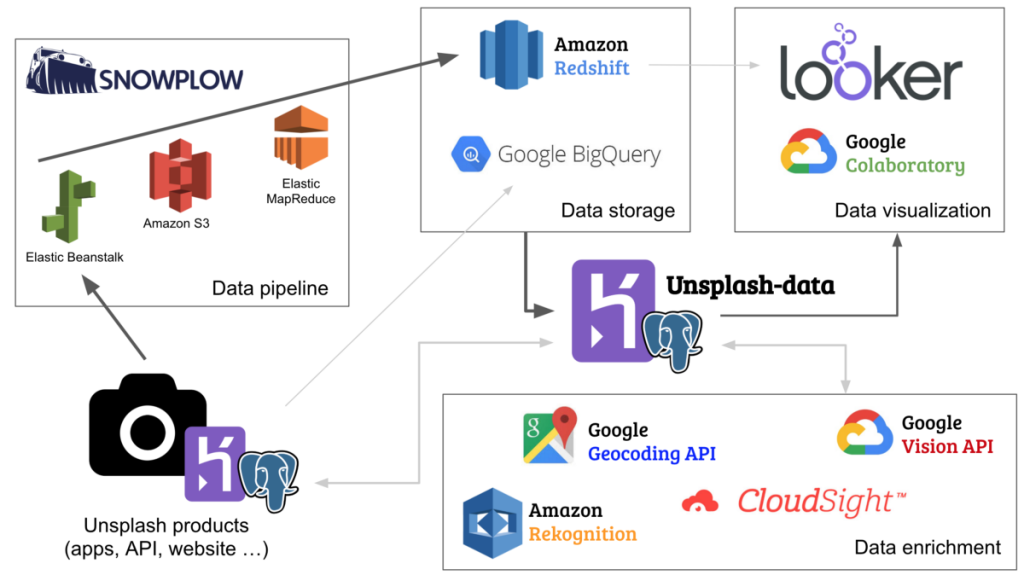Introduction
In today’s fast-paced business landscape, data has become the lifeblood of successful organizations. Companies that leverage data to drive their decision-making processes are poised to gain a significant competitive edge. This article delves into the concept of a data-driven organization, exploring its benefits, the data-driven decision-making framework, and the steps to become a data-driven enterprise.
What is a Data-Driven Organization?
A data-driven organization is one that places data at the core of its decision-making processes. These organizations collect, analyze, and utilize data from various sources to inform their strategic decisions, operational efficiency, and overall business performance. By embracing a data-driven approach, companies can gain valuable insights, identify trends, and make informed choices that align with their objectives.
Why is Data Important for Businesses?
Data has become an invaluable asset for businesses across all sectors and sizes. It offers a wealth of information that organizations can leverage to drive growth, enhance customer experiences, and gain a competitive edge. By systematically collecting and analyzing data, companies can enhance decision-making processes. It’s necessary to rely on informed, data-backed insights rather than intuition or gut feelings. Additionally, data analysis helps to optimize operations by pinpointing inefficiencies, streamlining processes, and ensuring resources are allocated more effectively. Moreover, understanding customer behavior and preferences through data enables organizations to tailor their products, services, and marketing strategies. Thereby improving overall customer experience and satisfaction. Furthermore, data-driven insights play a crucial role in identifying new opportunities. For instance, emerging market trends, untapped customer segments, and potential areas for innovation and expansion.
Benefits of Being a Data-Driven Organization
Embracing a data-driven approach can provide organizations with a wide range of benefits. Firstly, improved decision-making results from more informed, objective, and evidence-based choices that positively impact business outcomes. Additionally, leveraging data insights enhances operational efficiency by optimizing workflows, reducing costs, and improving overall efficiency. Moreover, data-driven organizations gain a competitive advantage by making informed strategic decisions, anticipating market trends, and outperforming competitors. Furthermore, insights from data lead to better resource allocation, targeted marketing efforts, and effective product development, driving revenue and profitability. Lastly, understanding customer behavior and preferences through data improves customer satisfaction and loyalty by enabling more personalized and relevant experiences.
What is the Data-Driven Decision-Making Framework?
The data-driven decision-making framework is a structured approach that organizations can follow to effectively leverage data in their decision-making processes. Firstly, it involves defining the problem or objective clearly to ensure focus and alignment with business goals. Next, data is collected from various sources and organized to maintain quality and consistency. Subsequently, data analysis tools and techniques are applied to analyze and interpret the data, uncovering insights and patterns that inform decision-making. Afterward, alternative options or scenarios are evaluated based on these insights to assess their potential impact on outcomes. Once informed by data-driven analysis, a decision is made that aligns with organizational goals and is supported by the insights gained. Finally, the outcomes of the decision are continuously monitored and evaluated to gauge effectiveness, with adjustments made as necessary to optimize results over time.

How to Become a Data-Driven Organization
Becoming a data-driven organization is a journey that requires a strategic and holistic approach. Here are the key steps to help organizations on their path to data-driven transformation:
Steps to Becoming a Data-Driven Organization
- Develop a Data Strategy: Establish a clear and comprehensive data strategy that aligns with the organization’s overall business objectives.
- Implement a Data Governance Framework: Implement a robust data governance framework to ensure data quality, security, and compliance.
- Foster a Data-Driven Culture: Encourage a culture of data-driven decision-making. Promote data literacy, providing training, and empowering employees to use data effectively.
- Invest in Data Infrastructure: Develop a scalable and secure data infrastructure that can handle the organization’s data needs. This includes storage, processing, and analysis capabilities.
- Adopt Data Analytics Tools: Leverage a suite of data analytics tools and technologies to collect, analyze, and visualize data. These will help to enable informed decision-making.
- Hire and Develop Data-Savvy Talent: Attract and retain skilled data professionals, such as data analysts, data scientists, and data engineers. These will help to drive the organization’s data-driven initiatives.
- Continuously Iterate and Improve: Regularly review the organization’s data strategy, processes, and tools. Also make necessary adjustments to ensure ongoing improvement and adaptation to changing business needs.
Implementing a Data Strategy
Developing and implementing a comprehensive data strategy is a crucial step in becoming a data-driven organization. A well-designed data strategy should address the following key elements:
- Data Governance: Establish clear policies, processes, and responsibilities for data management, including data quality, security, and compliance.
- Data Architecture: Define the organization’s data architecture, including data sources, data storage, data processing, and data distribution.
- Data Analytics and Insights: Determine the analytical capabilities required to generate actionable insights from data. Also invest in the necessary tools and technologies.
- Data-Driven Culture: Foster a culture that values data-driven decision-making, promotes data literacy, and encourages employees to leverage data in their daily work.
- Data-Driven Initiatives: Identify and prioritize data-driven initiatives that align with the organization’s strategic objectives, and allocate resources accordingly.
Collecting and Analyzing Data
Effective data collection and analysis are the cornerstones of a data-driven organization. Organizations should:
- Identify Data Sources: Determine the various internal and external data sources that can provide relevant and valuable information.
- Implement Data Collection Processes: Establish robust data collection processes to ensure the consistent and reliable capture of data.
- Cleanse and Integrate Data: Implement data cleaning and integration processes to ensure data quality and consistency across different systems and sources.
- Analyze Data: Utilize advanced data analysis techniques, such as statistical analysis, predictive modeling, and machine learning, to uncover insights and patterns.
- Communicate Insights: Effectively communicate the data-driven insights to stakeholders, enabling informed decision-making and action.
Tools and Technologies for Data Analysis
To support their data-driven initiatives, organizations can leverage a wide range of tools and technologies, including:
- Data Warehousing and Business Intelligence (BI) Tools: Solutions like Snowflake, Amazon Redshift, and Microsoft Power BI that enable data storage, integration, and advanced analytics.
- Data Visualization Tools: Tools like Tableau, Qlik, and Microsoft Power BI that help organizations present data in a visually compelling and easy-to-understand manner.
- Advanced Analytics and Machine Learning Platforms: Solutions like Amazon SageMaker, Google Cloud AI, and Microsoft Azure Machine Learning that enable the development and deployment of sophisticated predictive models.
- Big Data and Streaming Data Technologies: Platforms like Apache Hadoop, Apache Spark, and Apache Kafka that handle the processing and analysis of large, complex, and high-velocity data sets.
- Data Governance and Data Quality Tools: Solutions like Informatica, Talend, and IBM InfoSphere that support data governance, data quality management, and data lineage tracking.
Challenges of Becoming a Data-Driven Organization
While the benefits of being a data-driven organization are substantial, the journey to transformation is not without its challenges. Firstly, ensuring the accuracy, completeness, and consistency of data poses a significant challenge, particularly with large and diverse data sets. Additionally, fragmented data across different systems and departments can create data silos that hinder the organization’s ability to obtain a comprehensive view of its data. Moreover, the lack of data literacy among employees can impede their ability to effectively leverage data in decision-making processes. Furthermore, organizational culture and resistance to change often present barriers to the successful implementation of data-driven initiatives. Lastly, navigating a complex landscape of data privacy and security regulations adds another layer of complexity to organizations’ data-driven efforts, requiring careful compliance management.
Example of a Data-Driven Organization: Amazon
Amazon is a prime example of a highly successful data-driven organization. The e-commerce giant has built its business model around data-driven decision-making, leveraging data to optimize every aspect of its operations, from supply chain management to customer personalization.
Amazon’s data-driven approach is evident in its:
- Predictive Analytics: Amazon uses advanced predictive models to forecast demand, optimize inventory, and personalize product recommendations for its customers.
- Automated Decision-Making: The company’s algorithms make real-time decisions on pricing, product placement, and logistics, based on vast amounts of data.
- Continuous Experimentation: Amazon constantly tests new ideas and features, using data to quickly identify and scale successful initiatives.
- Data-Driven Culture: The company fosters a culture of data-driven decision-making, where employees at all levels are encouraged to use data to support their decisions.
Amazon’s relentless focus on data has been a key driver of its success, enabling the company to stay ahead of the competition and deliver exceptional customer experiences.
Conclusion: The Power of Data-Driven Decision-Making
In today’s fast-paced and highly competitive business landscape, data has emerged as a critical asset for organizations seeking to gain a sustainable competitive advantage. By embracing a data-driven approach, companies can make more informed decisions, optimize their operations, and deliver exceptional customer experiences.
As organizations navigate their journey towards becoming data-driven, they must address the challenges of data quality, data silos, and cultural resistance. While investing in the necessary infrastructure, tools, and talent. By doing so, they can unlock the true power of data-driven decision-making and position themselves for long-term success in the digital age.
To learn more about how your organization can become data-driven and leverage the power of data to drive growth and innovation, read our article Information Technology Governance: Succeed in the Digital Age.









Leave a Reply